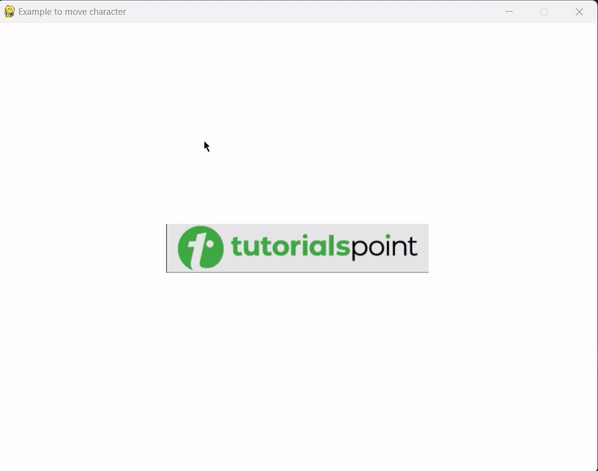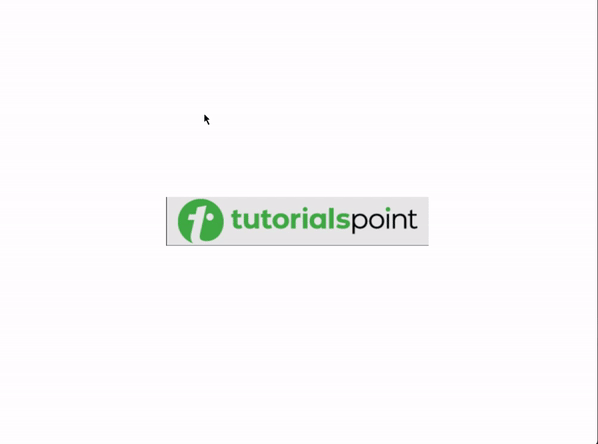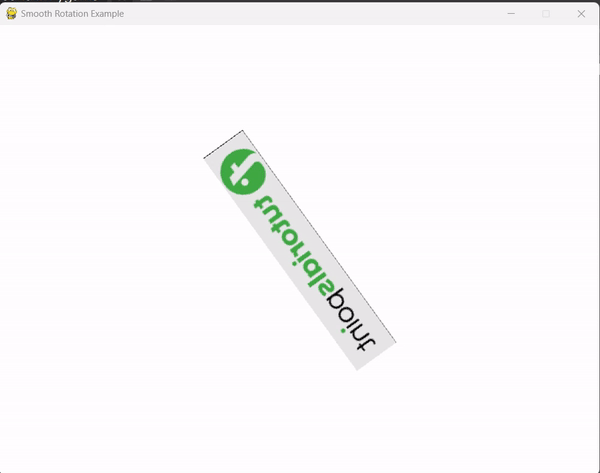如何在Pygame中移动游戏角色?
Pygame 是一个强大的库,允许开发人员使用Python编程语言创建 engaging 2D 游戏。游戏开发的一个基本方面是角色移动。
在本文中,我们将学习如何在Pygame中移动游戏角色。无论你是初学者还是有经验的开发者,本文都将为你提供实现流畅、响应迅速的游戏角色移动所需的知识和技能。
在Pygame中移动游戏角色的步骤
以下是在Pygame中移动游戏角色的完整步骤:
步骤1:设置游戏窗口并初始化Pygame
首先,在代码开头包含以下行以导入所需的模块:import pygame。然后,通过调用pygame.init()初始化Pygame。接下来,使用s_width和s_height变量定义窗口的宽度和高度。使用pygame.display.set_mode((s_width, s_height))创建游戏窗口,并使用pygame.display.set_caption(“Your Game Window Title”)设置窗口的标题。
语法
import pygame
pygame.init()
s_width, s_height = 800, 600
screen = pygame.display.set_mode((s_width, s_height))
pygame.display.set_caption("Your Game Window Title")
第二步:加载角色图像并定义角色位置
使用 char_img = pygame.image.load(“character.png”) 加载游戏角色的图像文件。创建一个矩形对象来表示角色的尺寸,通过调用 char_rect = char_img.get_rect() 实现。为了将角色定位在游戏窗口的中心,使用 char_rect.center = (s_width // 2, s_height // 2) 设置矩形的中心点位置。
语法
char_img = pygame.image.load("character.png")
char_rect = char_img.get_rect()
char_rect.center = (s_width // 2, s_height // 2)
第三步:处理角色移动的用户输入
在游戏循环中,使用keys = pygame.key.get_pressed()获取当前按下的键的列表。检查keys列表以确定哪些键被按下。例如,当按下左箭头键时,使用以下条件向左移动角色:if keys[pygame.K_LEFT]: char_rect.x -= movement_speed。类似地,检查其他箭头键以处理不同方向的角色移动。
语法
keys = pygame.key.get_pressed()
if keys[pygame.K_LEFT]:
char_rect.x -= movement_speed
if keys[pygame.K_RIGHT]:
char_rect.x += movement_speed
if keys[pygame.K_UP]:
char_rect.y -= movement_speed
if keys[pygame.K_DOWN]:
char_rect.y += movement_speed
步骤4:更新屏幕
处理用户输入后,必须更新屏幕以反映出所做的更改。首先使用screen.fill((255, 255, 255))清空屏幕,以填充白色背景。接下来,使用screen.blit(char_img, char_rect)将角色图像绘制到屏幕的当前位置。最后,使用pygame.display.flip()更新整个显示屏。
语法
screen.fill((255, 255, 255))
screen.blit(char_img, char_rect)
pygame.display.flip()
第5步:处理事件和控制游戏循环
为了确保游戏窗口一直保持打开直到用户决定关闭它,在游戏循环中包含事件处理。使用 for event in pygame.event.get() 迭代事件列表。检查事件类型是否为 pygame.QUIT,表示用户想要关闭窗口。如果满足这个条件,设置 running = False 以退出游戏循环并退出游戏。
语法
screen.fill((255, 255, 255))
screen.blit(char_img, char_rect)
pygame.display.flip()
步骤6:添加时钟并设置所需的帧率
要控制游戏的帧率,请使用clock = pygame.time.Clock()创建一个时钟对象。通过将FPS设置为适当的值来指定所需的帧率。在游戏循环中,调用clock.tick(FPS)来调节帧率。
语法
screen.fill((255, 255, 255))
screen.blit(char_img, char_rect)
pygame.display.flip()
示例1:使用pygame进行基本角色移动
#import the pygame and keyboard
import pygame
import keyboard
# Initialize Pygame
pygame.init()
# Set up the game window
s_width, s_height = 800, 600
screen = pygame.display.set_mode((s_width, s_height))
pygame.display.set_caption("Example to move character")
# Load the character image
char_img = pygame.image.load("tplogo.png")
char_rect = char_img.get_rect()
char_rect.center = (s_width // 2, s_height // 2)
# Set up the clock
clock = pygame.time.Clock()
FPS = 60
# Set the game loop
running = True
while running:
dt = clock.tick(FPS) / 1000.0
for event in pygame.event.get():
if event.type == pygame.QUIT:
running = False
if keyboard.is_pressed('left'):
char_rect.x -= 5
if keyboard.is_pressed('right'):
char_rect.x += 5
if keyboard.is_pressed('up'):
char_rect.y -= 5
if keyboard.is_pressed('down'):
char_rect.y += 5
# Update the screen
screen.fill((255, 255, 255))
screen.blit(char_img, char_rect)
pygame.display.flip()
# Quit the game
pygame.quit()
输出

示例2:使用pygame进行基于网格的移动
image
char_img = pygame.image.load("tplogo.png")
char_rect = char_img.get_rect()
char_rect.center = (s_width // 2, s_height // 2)
# Set up the clock
clock = pygame.time.Clock()
FPS = 60
# Define grid size and movement speed
grid_size = 100
movement_speed = 5
# Set the game loop
running = True
while running:
dt = clock.tick(FPS) / 1000.0
for event in pygame.event.get():
if event.type == pygame.QUIT:
running = False
if keyboard.is_pressed('left'):
char_rect.x -= movement_speed * dt
if keyboard.is_pressed('right'):
char_rect.x += movement_speed * dt
if keyboard.is_pressed('up'):
char_rect.y -= movement_speed * dt
if keyboard.is_pressed('down'):
char_rect.y += movement_speed * dt
# Snap the character to the nearest grid position
char_rect.x = round(char_rect.x / grid_size) * grid_size
char_rect.y = round(char_rect.y / grid_size) * grid_size
# Update the screen
screen.fill((255, 255, 255))
screen.blit(char_img, char_rect)
pygame.display.flip()
# Quit the game
pygame.quit()
输出

示例3:平滑旋转和角色翻转
在这个示例中,角色图像(tplogo.png)首先被加载并且居中显示在游戏窗口上。然后,根据旋转速度逐步增加旋转角度,实现平滑旋转效果。为了实现水平翻转效果,利用pygame.transform.flip()函数,将旋转后的图像以True作为第一个参数水平翻转。
import pygame
# Initialize Pygame
pygame.init()
# Set up the game window
s_width, s_height = 800, 600
screen = pygame.display.set_mode((s_width, s_height))
pygame.display.set_caption("Smooth Rotation Example")
# Load the character image
char_img = pygame.image.load("tplogo.png")
char_rect = char_img.get_rect()
char_rect.center = (s_width // 2, s_height // 2)
# Set up the clock
clock = pygame.time.Clock()
FPS = 60
# Define rotation angle and speed
rotation_angle = 0
rotation_speed = 2
# Set the game loop
running = True
while running:
dt = clock.tick(FPS) / 1000.0
for event in pygame.event.get():
if event.type == pygame.QUIT:
running = False
# Rotate the image
rotation_angle += rotation_speed * dt
rotated_image = pygame.transform.rotate(char_img, rotation_angle)
# Flip the image horizontally
flipped_image = pygame.transform.flip(rotated_image, True, False)
# Update the screen
screen.fill((255, 255, 255))
screen.blit(flipped_image, flipped_image.get_rect(center=char_rect.center))
pygame.display.flip()
# Quit the game
pygame.quit()
输出

结论
通过按照文章中给出的步骤,您可以成功将游戏角色移植到Pygame。实现游戏窗口、角色图像、用户输入、事件处理和时钟控制将确保您的游戏中角色移动流畅。
 极客笔记
极客笔记